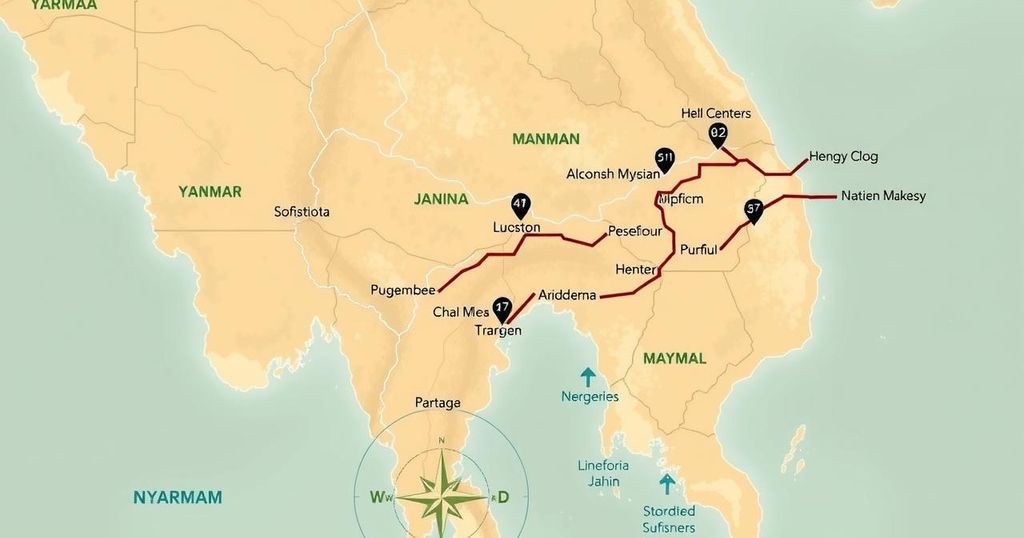Impact of USAID Cuts on U.S. Response to Myanmar Earthquake

Recent U.S. foreign aid cuts have hindered disaster response efforts in Myanmar following a devastating earthquake. Former USAID officials claim the U.S. was notably absent during crucial rescue periods, potentially exacerbating fatalities. As existing partnerships remain insufficient for effective aid, concerns grow regarding the U.S.’s diminishing role in international relief operations.
Recent cuts to foreign aid have hindered the United States’ ability to respond to the catastrophic earthquake in Myanmar, according to three former high-ranking officials from the U.S. Agency for International Development (USAID). They emphasized that “America has been on the sidelines” following the disaster, with one stating that the U.S. was absent during the critical rescue phase. These officials warned that the reduction in foreign assistance may have contributed to loss of life in the region.
The earthquake, which registered a magnitude of 7.7, has resulted in at least 2,700 fatalities, over 4,500 injuries, and a significant number of individuals still unaccounted for, as reported by Myanmar’s military. Former USAID officials indicated that the agency typically deploys Disaster Assistance Response Teams (DART), consisting of highly trained personnel equipped for immediate rescue efforts in the wake of such disasters.
These DART teams, often among the largest foreign assistance groups deployed to disaster sites, normally include around 200 members, predominantly rescue workers. Presently, a team, comprising three advisory personnel rather than rescuers, is reportedly en route to Myanmar as part of U.S. governmental assistance, which has diminished in both scale and effectiveness compared to previous responses.
In addition to logistical shortcomings, the agency has been subject to cuts orchestrated by President Donald Trump’s administration, which has aimed to reduce foreign assistance since day one. This context included the recent layoff of personnel responsible for humanitarian assistance, which further complicated U.S. relief efforts during the earthquake’s aftermath.
Former USAID figures lamented the timeliness and effectiveness of U.S. response, pointing out that the lack of trained personnel capable of mobilizing resources for rescue operations severely limited the U.S. capabilities during this humanitarian crisis. The former officials noted that logistics contracts essential for deploying rescue teams were canceled, exacerbating the situation in Myanmar.
Despite assertions from the U.S. State Department that existing partnerships can sustain disaster relief efforts without a physical presence, critics highlight the ineffectiveness of remote assistance. They argue that effective rescue operations necessitate on-the-ground presence, which the current administration has not prioritized.
The loss of U.S. capability in international response is viewed as a concerning trend, with officials warning that this relenting focus will allow other global players, such as China, to occupy the void left by the diminished U.S. presence. Current U.S. efforts are reportedly focused on existing lifesaving programs, but the lack of a robust response to immediate disasters profoundly impacts regional stability and humanitarian needs.
The U.S. government’s recent foreign aid cuts have significantly diminished its capacity to respond to humanitarian crises, as evidenced by the inadequate response to the recent earthquake in Myanmar. The failure to mobilize essential rescue teams and equipment not only highlights logistical challenges but also raises serious concerns about the future of U.S. involvement in international disaster relief. As a result, the U.S. risks ceding its critical role in global humanitarian efforts to other nations.
Original Source: www.bbc.com








